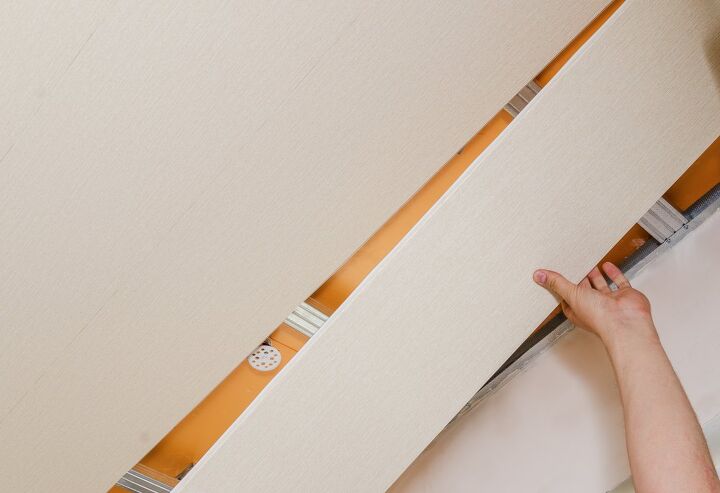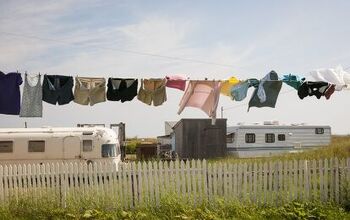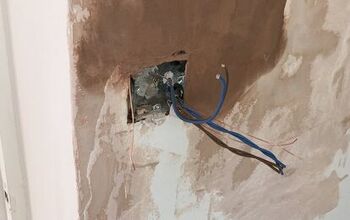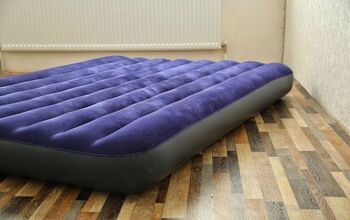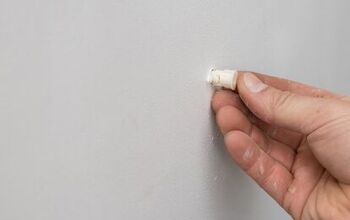Can You Put Up Paneling Without Drywall? (Find Out Now!)

When you’re trying to put together a house, drywall is one of the most common parts of almost any wall. However, there are occasionally other ways to make a house have walls. One of the more popular options is wood paneling, and rumor has it that you can put it up without drywall at all. But, is this little rumor true?
Assuming it’s legal to do so in your neighborhood, it’s generally doable as long as your paneling is at least 1/4 inch thick. If you choose to install wood paneling without drywall, it’s important to realize that this could be a major fire hazard.
Wood paneling is definitely seeing a resurgence, but that doesn’t mean it’s the right choice for you 100 percent of the time. It’s time to talk about what this trendy material can do—at least, without drywall.
Do You Need Wall and Ceiling Contractors?
Get free, zero-commitment quotes from pro contractors near you.

Can You Put Up Wood Paneling Without Drywall?
You can, and it’s relatively easy to do. All you have to do is take a nail gun and nail the paneling directly to the studs of your house. I suggest using smaller, thinner nails since they tend to be easier to hide. To make sure that it looks good, add a little bit of molding where the paneling ends, or try a similar way to hide the rough seams.
Why Is Putting Up Paneling Without Drywall A Bad Idea?
Fireproofing is a major focal point of any top builder. Or really, it should be a basic concern considering how many homes burn down every year. Wood paneling catches fire and spreads fire really fast. Drywall is one of the most basic measures that builders take against the spread of housefires.
If you put paneling directly on the studs, you are attaching highly flammable material to the very items that keep your house together. You’re also basically building a wall that can burst into flames and speed up fire spread fast. It’s a risk most people should not want to take.
Oh, and if you’re a musician? There’s zero soundproofing that this offers. So you’ll hear everything from these paper-thin, unprotected walls. This leads to a lot of calls for “QUIET!” from roommates, if you are not careful.
Why Would Someone Choose To Put Up Paneling Without Drywall?
I mean, everyone has their reasons. The most common reasons for trying to put up wood paneling without drywall involve both budget and work hours. Drywall, as a material, is somewhat pricey. Labor for hanging up drywall adds up pretty quick, too.
When people are looking to put up paneling alone, it’s meant to be a slap-dash job. In most cases, it’s advised as a temporary fix if you have to make a home look good on a very tight budget.
Check Your Building Codes, Please!
It’s a well-known fact that having drywall is an important part of fireproofing your home. It slows the spread of fire from room to room. Due to these reasons, many parts of the country no longer allow homes to have wood paneling of any thickness without the use of drywall underneath it.
On a national level, wood paneling that is thinner than 1/4 of an inch is considered to be a building code violation. It’s been that way since at least 1970. Most other parts of the country will have a minimum thickness that they require paneling to have.
It’s quite possible that you live in an area where this happens to be the case. This means that putting up paneling without drywall is a good way to get your building condemned, to cause fines to be levied against you, and to drop the value of your home. Check (and think twice) before you try this route.
How Much Is The Typical Building Code Standard For Wood Paneling Without Drywall?
This varies from county to county, but you should never do less than 1/4 of an inch panel thickness, no matter where you live in America. That’s considered to be the basic minimum to prevent some kind of spread—though it’s clear that there’s not much prevention that’s worth mentioning here.
If your county has beefed-up building codes, you should expect the bare minimums to be 1/2 inch for residential areas. If your building is for commercial purposes, then the minimum is generally around 5/8 of an inch thick for paneling done sans drywall. Generally speaking, the thicker the better.
Do You Need Wall and Ceiling Contractors?
Get free, zero-commitment quotes from pro contractors near you.

Related Questions
Is wood paneling considered to be dated?
Wood paneling, or wainscoting, was considered to be the premier wall staple of the middle of last century. You basically had to have this stuff on your walls if you wanted to be considered chic and stylish. In the 90s and 2000s, it faded into obscurity.Today, we’re starting to see a resurgence in the popularity of wood paneling. It’s still considered dated by many, but it’s not the “unforgivable” look that it once was. In the right home, it can look downright trendy, if not hipster-chic.
How can you tell if there’s drywall behind wood paneling in your home?
Honestly, you can usually tell by knocking on the paneling and checking the acoustics in the room. If it sounds oddly hollow, it probably has no drywall behind it. Drywall offers soundproofing that having hollow wood paneling wouldn’t. On a similar note, rooms that have no drywall, tend to have very little insulation.If your room seems to be prone to drafts, it’s likely that you have no drywall. Even so, the best way to find out is to actually look behind the paneling.
Is shiplap paneling cheaper than drywall?
Drywall paneling is one of the most popular building materials because it works as a great wall, and makes for cheap installation. Drywall costs around $12 to $16 to install. Shiplap, however, starts at around $19 and caps out at $26 per square media.When in doubt, it’s always safe to assume that drywall alone is going to be the cheaper wall material. It is, for the record, one of the easiest ways to get the walls that you want.

Ossiana Tepfenhart is an expert writer, focusing on interior design and general home tips. Writing is her life, and it's what she does best. Her interests include art and real estate investments.
More by Ossiana Tepfenhart



